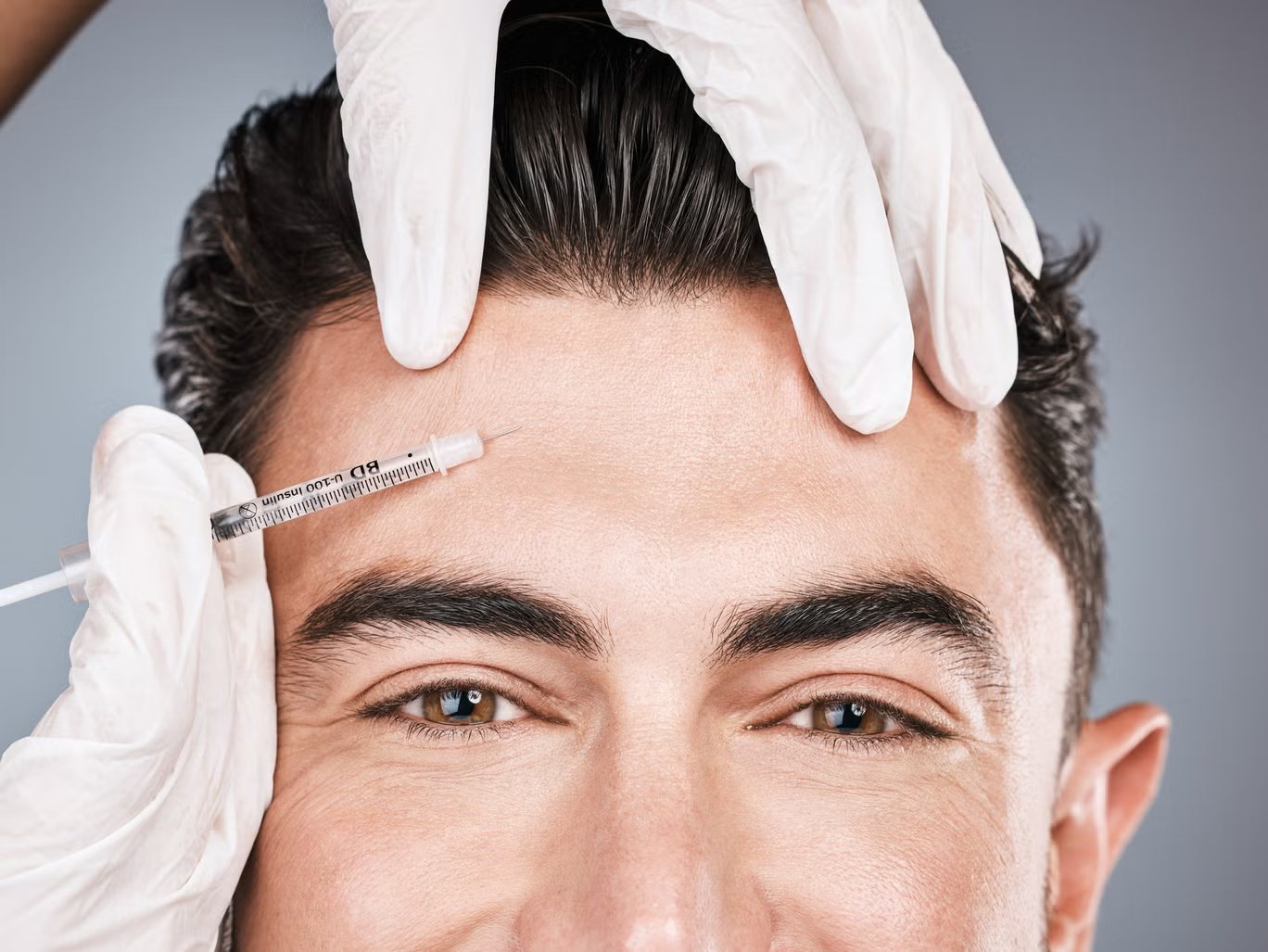
You look in the mirror and pause. Forehead lines stay longer after expressions fade. Crow’s feet become visible even without smiling. These aren’t dramatic changes. But they’re consistent. You see them before anyone else comments.
Over time, the signs settle in. Lighting at work. Zoom calls. Photographs. You begin adjusting your angle. You use filters. You pull at the skin with your hands, just to check how it used to look.
The shift is subtle. But you can’t unsee it.
Botox feels like a maintenance step—not a major intervention
Men are turning to Botox because it doesn’t require major change. It doesn’t alter identity. It simply minimizes what you don’t want emphasized. It becomes part of routine care.
Just like getting a haircut or shaving before a meeting. You don’t go to look different. You go to look clear. Steady. Composed. Most men ask for minimal results. They don’t want frozen expressions. They want to look rested.
It fits into the background of life—not the center.
Appearance expectations now reach into more professional spaces
Work culture is visual. Cameras are always on. Performance reviews feel more direct. Looking tired becomes a disadvantage, even if you’re performing well.
Clients notice. Teams notice. You begin to wonder if your face communicates something your words don’t. Botox becomes a tool to neutralize that. You’re not chasing perfection. You’re trying to remove distractions.
Your face becomes part of your delivery—whether you like it or not.
Most men don’t tell anyone they’re getting Botox
They go during lunch. Or after work. The appointment is quick. They don’t mention it to friends. They don’t post about it. It’s a private decision, like changing banks or switching razors.
There’s no big reveal. The goal isn’t dramatic change. It’s that no one notices. You just look the way you think you’re supposed to. The comments you get aren’t about your skin. They’re about your energy.
Privacy is part of the appeal.
Many start with one area and expand only after seeing results
Forehead lines are the most common entry point. A few units. Nothing excessive. After results settle, they might return for another spot. Maybe the area between the eyebrows. Maybe near the eyes.
They don’t plan the second session right away. They wait. They check the mirror under different lighting. Then they go back. One area at a time.
Progress comes from curiosity, not pressure.
The fear of looking overdone fades after the first treatment
Before starting, the main concern is expression loss. You’ve seen bad examples online. Frozen foreheads. Raised brows. Uneven faces. You ask a lot of questions. You hesitate.
But after the first appointment, you realize it’s not what you thought. You still look like yourself. You can still move your face. You just don’t see deep folds anymore. The change is lighter than expected.
Experience replaces assumption.
Botox isn’t just about looking younger—it’s about looking less stressed
You don’t mind looking older. But you don’t want to look angry. Or tense. Deep frown lines create impressions. You don’t feel the emotion they suggest. But others respond as if you do.
Softening those lines removes that miscommunication. You stop being asked, “Are you okay?” when you feel fine. People engage differently. They reflect what they see.
Looking relaxed changes how others behave.
Results are subtle enough that no one comments
Most people don’t notice anything changed. They just think you look better. More focused. Less tired. You get fewer questions about sleep. More compliments about your mood.
You didn’t say you were getting Botox. You didn’t want feedback. You wanted ease. And that’s what shows up. Quiet improvement. Low visibility.
The best results don’t need explanation.
Botox now feels like part of modern grooming
You used to think it wasn’t for you. Then you tried it. Now it’s just another item on your calendar. Every four months, you stop by the clinic. It takes 15 minutes. You go back to your day.
It doesn’t feel like a big decision anymore. It feels like trimming your beard. Cleaning your shoes. A quiet form of care that fits between meetings and errands.
You don’t plan around it. You just maintain.
Skincare routines made the idea more acceptable
Years ago, men didn’t talk about moisturizer. Now they do. They buy sunscreen. They use eye cream. They understand what serums are for. That shift in self-care made Botox feel normal.
It’s not about vanity. It’s about control. If you can treat dryness, you can treat wrinkles. The categories overlap more than they used to.
Skincare became the door. Botox became a step beyond.
Expectations about male appearance are changing faster than before
It’s not just Hollywood. It’s everyday life. Dating apps. Work presentations. Online photos. Men are judged visually more than ever. There’s pressure to look competent, calm, and well.
That doesn’t mean attractive. It means prepared. Controlled. Presentable. Botox isn’t about looking like a model. It’s about removing distractions that make you look less in control.
Image expectations changed. Men are adapting.
First-timers often say they wish they started earlier
You wait for years. You watch videos. You compare photos. Then you try it. And the main thought you leave with is: that was easy.
You realize the fear was built on assumption. The reality is subtle. You didn’t need to wait. The lines you wanted to treat are still there—but lighter. Softer.
And that’s enough.
Most men prefer less Botox, not more
They don’t want full correction. They don’t want a polished surface. They just want softening. Just enough.
Injectors note the difference. Male clients often ask for fewer units. Less shine. More movement. The goal is always “still me.” Just a bit smoother. Just a bit rested.
Overdoing it ruins the point.
Seeing others quietly doing it makes it easier to start
You notice. A colleague looks better. A friend seems more refreshed. You ask casually. They hesitate—then admit it.
That opens the door. It feels normal now. You don’t need to justify. You just act. Once others admit it, the silence ends.
Permission comes from visibility.
